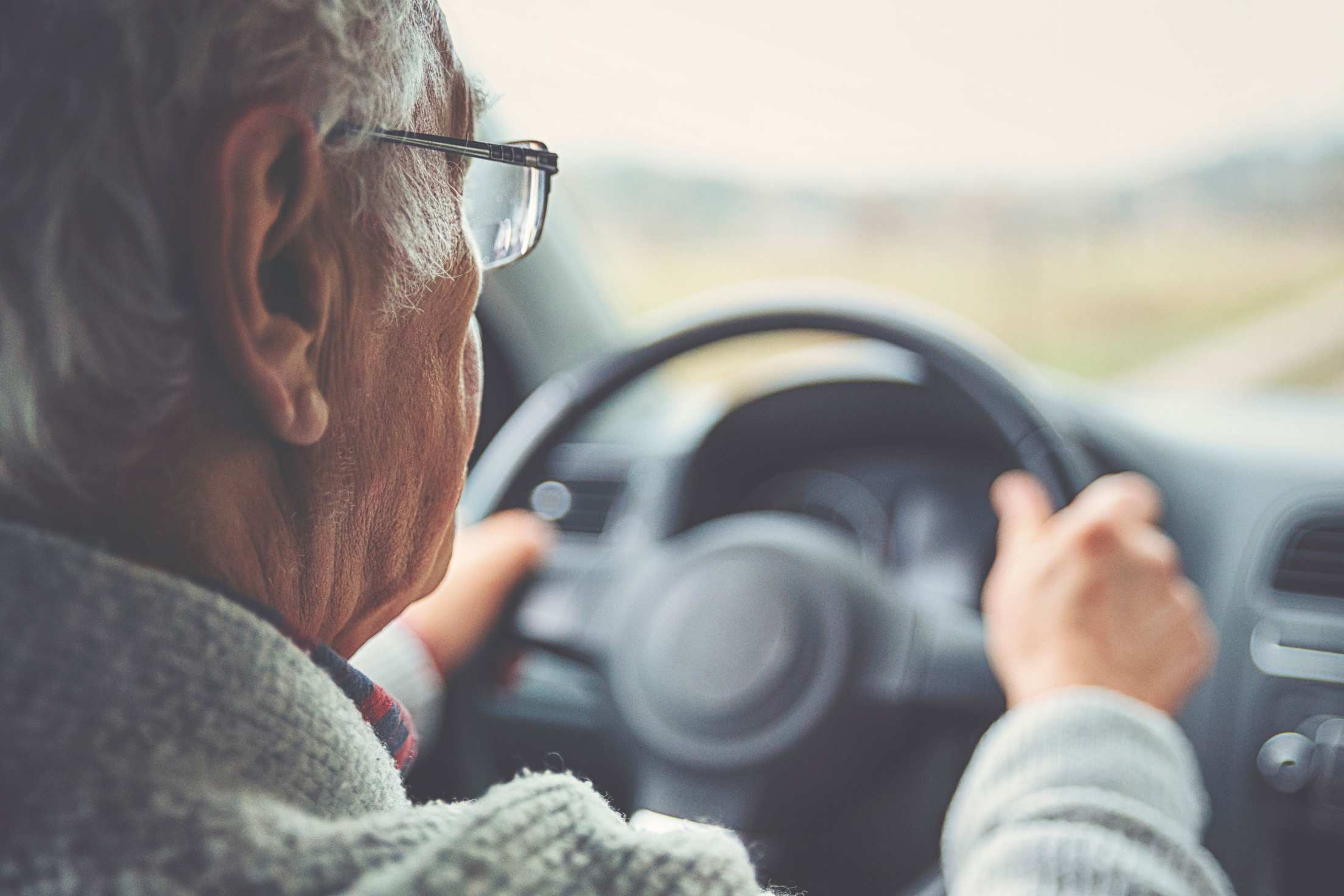
How Aging Eyesight Can Affect Driving
Common vision problems can make it harder to drive as you age, especially at night.

A driver’s eyesight is crucial in preventing car crashes, because nearly all the sensory input needed to drive a car comes from visual cues. If your eyesight is diminished, so is your ability to drive safely. This is especially true for senior drivers, who may also have diminished reaction time.
Challenges of Driving at Night
When you’re behind the wheel, your vision is the most important tool you have. That’s why most states require motorists to undergo vision tests as part of the driver’s license renewal process. Depending on where you live, you may need to have a vision test in person at a state licensing office or submit results of a test performed by an eye doctor.
By age 60, your eyes need three times as much light to see as they did at age 20. That’s because over the years, pupils get smaller and don’t dilate as much in dark conditions, which makes driving at night particularly hazardous.
Your vision may test well in the eye doctor’s office but still be limited when driving at night, where lighting is poor and more complex visual tasks are required. The ability to resist glare and see reflective road signs and markings also decreases with age, so senior drivers should take extra care when driving at night.

How to Make Driving Safer as You Age
“No matter how good a driver we become, our vision is likely going to get worse over time,” says William Van Tassel, manager of AAA driver training programs. But that doesn’t mean drivers can’t plan ahead and adapt to some of the natural changes in eyesight over the years. Van Tassel recommends taking the following actions to stay safer on the road as your eyesight changes.
- Get regular eye checkups. Work with your optometrist to determine whether you need visual aids, whether you should limit driving at night, and at what point your vision is no longer adequate for driving.
- Drive during the best conditions. When possible, plan your drive around optimal lighting and weather conditions. Daylight hours are ideal; dawn and dusk may be more challenging than full darkness.
- Enlist a second set of eyes. No one enjoys a distracting backseat driver, but asking a passenger to help you look out for pedestrians, cyclists, or turning vehicles, for instance, can bring peace of mind, especially when driving at night.
- Clean your windshield. A dirty windshield can make it difficult to see when the sun or headlights shine directly on the glass. Regularly clean both the inside and the outside.
- Avoid looking into headlights. Just before an oncoming car passes by, briefly glance down and to the right at the white line on the edge of your lane. Immediately look up once the car’s headlights have passed. This will help you stay on course without having your night vision temporarily reduced by the lights.
- Adjust your mirrors. Whether the glare comes from headlights on the car behind you or the setting sun, rear and side mirrors can reflect painfully into your eyes. To avoid this, start by adjusting your side mirrors so they are angled outward just a bit to reduce the glare. If you like the change, keep them in this position all the time. Some rearview mirrors also allow you to easily adjust the angle to redirect the glare of the headlights behind you.
- Limit interior light. Bright lights inside your car can make it more difficult to see the road ahead. Keep dome lights off, dim dashboard screens and gauges, and ask passengers to dim their devices and keep them pointed away from you.
- Try anti-reflective lenses on your glasses. And, of course, never wear sunglasses at night.
- Remove tinting from front windows. Tinted films can make it even more difficult to see in low light.
- Leave extra space. You want to leave ample room between you and the cars around you at all times, but it’s especially important when conditions make it difficult to see far ahead. This space gives you extra time and room to safely respond to unexpected situations.

Common Vision Problems
Vision, like other senses, gradually declines over time. As you age, your useful field of view gets smaller and you can no longer detect certain safety risks. Because changes may be hard to notice, it’s important to have annual tests for common vision problems such as these:
- Myopia, or nearsightedness. Nearsightedness runs in families, usually appearing in childhood. It sometimes worsens with age. Nearsighted people have difficulty reading highway signs and seeing other objects at a distance, but can usually see well for tasks such as reading or sewing. Nearsightedness may be corrected with glasses, contact lenses, or eye surgery. People with myopia may need to wear glasses or contact lenses all the time or only for tasks that require detailed distance vision, such as driving.
- Hyperopia, or farsightedness. People with hyperopia can see distant objects very well, but have difficulty focusing on objects that are close. Farsightedness can be corrected with glasses or contact lenses to change the way light rays bend into the eyes. If your eyewear prescription begins with plus numbers—for example, +2.50—you are farsighted and may need to wear glasses or contacts all the time or only when reading, working on a computer, or doing other close-up work.
- Glaucoma. This common problem is a buildup of pressure in the eye, which can interfere with the transmission of visual information to the brain. Untreated or uncontrolled glaucoma can eventually reduce your ability to see at the edges of your vision (peripheral vision), and progressive eye damage due to glaucoma can lead to blindness.
- Macular degeneration. Also called age-related macular degeneration or AMD, macular degeneration is the leading cause of vision loss and blindness among Americans age 65 and older. AMD is deterioration of the macula, which is the part of the retina responsible for the sharp central vision needed to read or drive.
- Cataracts. The most common cause of vision loss in people over age 40, cataracts are also the chief cause of blindness in the world. The term refers to a disorder in the proteins of the eye’s natural lens, which can make your vision appear cloudy.
If you have trouble with your vision or notice a change in what you’re able to see while you’re driving, it’s best to go to an optometrist to get a vision test.
AAA Members save 30 percent on eye exams with LensCrafters.